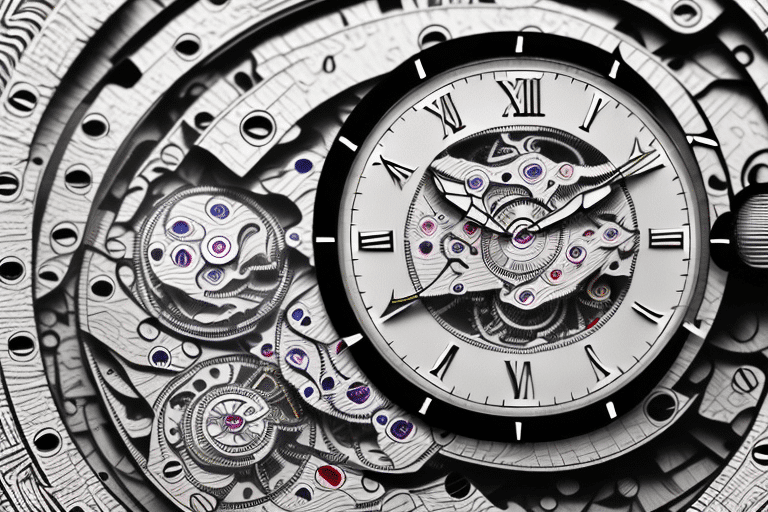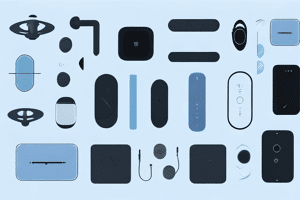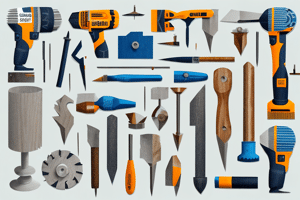UPDATED: March 17, 2024
Watches have been an integral part of human history, serving as important timekeeping devices for centuries. From the early beginnings of sundials and hourglasses to the invention of mechanical watches, the rise of quartz watches, and the emergence of digital watches, the evolution of timekeeping has come a long way. Today, we find ourselves in the era of smart watches, where technology and timekeeping converge to create a whole new world of possibilities.
The Evolution of Timekeeping Devices
Let's take a journey back in time and explore the fascinating evolution of timekeeping devices. It all started with the ancient civilizations, who relied on sundials and hourglasses to determine the passing hours. These early devices were simple yet effective, using the position of the sun or the flow of sand to measure time.
One of the most intriguing aspects of ancient timekeeping devices is how they were intricately tied to the natural world. For example, sundials were not only used for telling time but also served as a way to track the movement of the sun and understand the concept of daylight hours. Similarly, hourglasses, with their mesmerizing flow of sand, provided a tangible representation of time slipping away.
Fast forward to the invention of mechanical watches, a groundbreaking development that revolutionized timekeeping. Mechanical watches introduced a system of gears and springs, allowing for precise measurement of time. These intricate timepieces became a status symbol and a mark of craftsmanship.
Delving deeper into the world of mechanical watches unveils a fascinating realm of horology, where master watchmakers meticulously crafted each component by hand. The intricate dance of gears and escapements within a mechanical watch not only measured time but also showcased the artistry and precision of human engineering.
As technology progressed, quartz watches took the spotlight. These watches utilized the unique properties of quartz crystals to provide incredibly accurate timekeeping. The introduction of quartz watches in the 1960s brought affordability and reliability to the masses, making watches an everyday accessory.
Exploring the realm of quartz watches reveals the remarkable precision of these timepieces, where the oscillations of a quartz crystal regulated the movement of time. The shift to quartz technology not only improved accuracy but also paved the way for the miniaturization of timekeeping devices, leading to the development of sleek and stylish watches that could be worn for any occasion.
Then came the digital revolution, and with it, digital watches. As electronic technology advanced, watches evolved beyond just telling time. Digital watches offered additional features such as calculators, calendars, and even basic games. These watches appealed to a younger generation and marked a shift towards a more tech-savvy world.
Delving into the world of digital watches uncovers a fusion of technology and fashion, where sleek designs and multifunctional capabilities captured the imagination of consumers. The advent of digital watches not only transformed how we perceive time but also highlighted the ever-evolving relationship between technology and personal style.
Understanding the Mechanics of Watches
Now, let's delve into the inner workings of watches and understand the different mechanisms behind their precise timekeeping. Mechanical watches are a testament to engineering marvels, where the power of intricate gears and springs drives their movement. Each component carefully calibrated to ensure accurate timekeeping, making mechanical watches a true work of art.
In contrast, quartz watches owe their precision to the piezoelectric properties of quartz crystals. These crystals vibrate at a specific frequency in response to an electrical current, providing reliable timekeeping. Quartz watches are not just accurate; they are also maintenance-free, requiring only a battery change every few years.
Digital watches, on the other hand, rely on electronic displays to showcase time and additional features. These watches use integrated circuits to process information and use digital numerals or symbols to display time. With their easy-to-read displays and versatile functionality, digital watches became a popular choice for the modern age.
Furthermore, the world of horology is filled with fascinating complications that enhance the functionality and beauty of watches. Complications refer to any feature in a timepiece beyond the display of hours, minutes, and seconds. Some popular complications include chronographs for measuring elapsed time, moon phases to track lunar cycles, and tourbillons to counteract the effects of gravity on timekeeping.
Another intriguing aspect of watchmaking is the art of skeletonization, where the intricate inner workings of a watch are exposed by removing unnecessary material from the movement. This technique not only showcases the craftsmanship of the watchmaker but also allows enthusiasts to admire the complexity of mechanical watches in action, as gears and springs interact harmoniously to keep time ticking.
The Transition to Smart Watches
The advent of smart watches represents a significant leap in watch technology. Smart watches combine the timeless elegance of traditional watches with the power of modern technology. These innovative timepieces offer a wide range of features and functions that go beyond just telling time.
With the convergence of technology and timekeeping, smart watches have become an extension of our smartphones. They provide access to notifications, fitness tracking, music control, and even contactless payment options - all conveniently located on our wrists. Smart watches have seamlessly integrated into our daily lives, making tasks more efficient and keeping us connected like never before.
However, the rise of smart watches has also sparked debates within the watchmaking industry. Traditional watch enthusiasts argue that smart watches threaten the artistry and craftsmanship of mechanical and quartz watches. Yet, many watchmakers have embraced this change, combining traditional watchmaking techniques with smart technology to create hybrid watches that cater to both worlds.
One of the key advantages of smart watches is their ability to track health and fitness metrics. These devices come equipped with sensors that can monitor heart rate, track steps taken, and even analyze sleep patterns. This functionality has revolutionized the way people approach their health and wellness, providing real-time data and insights that were previously inaccessible.
Moreover, the design possibilities with smart watches are endless. From customizable watch faces to interchangeable bands, users can personalize their smart watches to suit their style and preferences. Some smart watch models even offer voice command capabilities, allowing users to interact with their devices in a hands-free manner.
The Future of Watches
As we look to the future, the possibilities for watches are endless. Hybrid watches, bridging the gap between traditional and smart watches, have gained popularity. These watches combine the elegance of mechanical or quartz movements with smart features like activity tracking and smartphone synchronization.
Moreover, sustainability is becoming increasingly important in watchmaking. Manufacturers are finding innovative ways to reduce the environmental impact of watch production by using recycled materials and developing energy-efficient mechanisms. This shift towards sustainability ensures that future watches are not only beautiful but also environmentally conscious.
Lastly, the influence of fashion and design cannot be overlooked when considering the future of watches. Watches have always been a statement piece, reflecting personal style. With evolving fashion trends and design aesthetics, watches will continue to adapt, incorporating new materials, colors, and shapes to appeal to the ever-changing preferences of consumers.
The Potential of Hybrid Watches
Hybrid watches represent a promising future for the watch industry. By seamlessly integrating traditional watchmaking with smart features, these watches offer the best of both worlds. Wearers can enjoy the elegance and craftsmanship of mechanical or quartz watches while staying connected to the digital world.
Imagine a watch that tracks your steps, monitors your heart rate, and displays your smartphone notifications - all within a classic timepiece. Hybrid watches allow us to stay connected in a discreet and sophisticated way, harmonizing technology and tradition.
But the potential of hybrid watches doesn't stop there. With advancements in technology, we can envision a future where these watches become even more intuitive and personalized. Imagine a watch that analyzes your sleep patterns, provides personalized health recommendations, and even acts as a virtual personal assistant, helping you navigate through your daily tasks effortlessly.
The Role of Sustainability in Watchmaking
As the world becomes more aware of the environmental impact of consumer goods, watchmaking is no exception. Watch manufacturers are embracing sustainability by using recycled materials, reducing carbon emissions, and exploring alternative energy sources.
But the commitment to sustainability goes beyond the production process. Future watches will be designed with longevity in mind, ensuring that they stand the test of time both in terms of style and functionality. Repairability and upgradability will be key considerations, allowing watch owners to extend the lifespan of their timepieces and reduce waste.
By adopting sustainable practices, watchmakers are ensuring a brighter future for both the industry and the planet. Future watches will not only be stylish and functional but also environmentally friendly - a true fashion statement with a conscience.
The Influence of Fashion and Design on Future Watches
Fashion and design have always been intertwined with watches. We choose watches that match our personal style, complement our outfits, and express our individuality. As fashion evolves, so do watches.
In the future, we can expect to see watches made with unconventional materials, vibrant colors, and unique shapes. Watch designers will continue to push the boundaries, creating timepieces that are not just functional but also true works of art.
From avant-garde designs that challenge traditional notions of watchmaking to collaborations with renowned fashion houses, the world of watches will continue to be a playground for creativity and self-expression.
Whether it's a minimalist watch with clean lines or a bold statement piece with intricate details, fashion and design will continue shaping the future of watches, ensuring that they remain a timeless accessory for generations to come.
As we reflect on the journey from mechanical to smart watches, it becomes clear that timekeeping has come a long way. From the simplicity of sundials to the precision of quartz and the connectivity of smart watches, each era has left its mark on the world of horology.
As we embrace the future, it's important to appreciate the artistry, craftsmanship, and technological innovations that have brought us here. Watches are not just timekeeping devices; they are pieces of history and personal expressions of style.
So, whether you prefer the intricate mechanisms of mechanical watches, the precision of quartz, or the versatility of smart watches, there's a watch out there for everyone. Embrace the world of watches and find the perfect timepiece that speaks to you and accompanies you on your journey through time.





